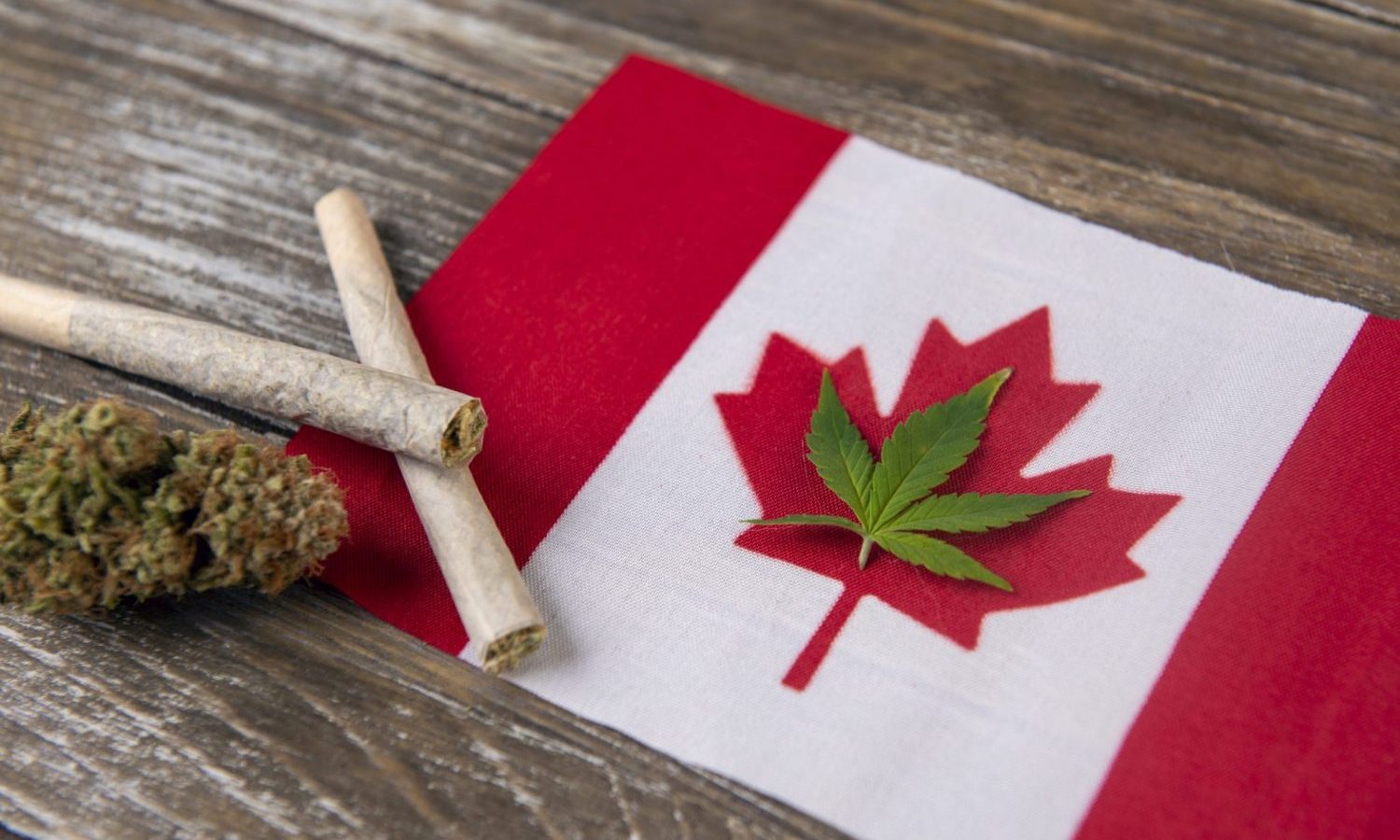As the cannabis industry matures, it begins to face the same issues as traditional retail. Some markets in Canada are now dealing with saturation issues.
High Tide Inc. (TSXV: HITI) (Nasdaq: HITI) just hit a milestone when the Canadian cannabis retailer announced that it has opened over 100 stores. High Tide said that its total number of branded retail locations across Canada numbered 101, and the company has 30 stores in Ontario. In addition to those stats, High Tide also noted that it has launched eight organically-built stores in the month of September alone. While this is a laudable event, could Ontario be reaching dispensary saturation and is that a bad thing for cannabis companies?
Competition is the lifeblood of capitalism. It is survival of the fittest. Retailers that don’t hit the mark will lose customers, while those that can deliver the right products at the right prices in an environment shoppers like will be winners.

In the cannabis industry, like other more traditional industries, there are only so many consumers for the product. The industry is limited in its ability to advertise and there is some discomfort at trying to woo new cannabis consumers. The stores are left to wait for the new consumers — often called the “canna curious” — to explore on their own. This has resulted in a plateauing of sales in some areas. Cannabis consumers can only consume so much within a week or month.
Too Much Competition
The Canadian market is beginning to see the effects of market saturation in some areas. Both Fire & Flower (OTC: FFLWF) and High Tide recently mentioned in their earnings announcements that sales were affected by this. Fire & Flower said that its same-store sales decreased 14% for forty-eight (48) stores in operation during the second quarter of 2021 due to a surge in newly licensed retail cannabis stores in Ontario. According to the company, in just three months the number of licenses went from 665 at May 1, 2021 to 981 at July 31, 2021. The company’s sales also dropped — despite the reopening of stores — to foot traffic due to the pandemic. Fire & Flower also pointed out that competitors had engaged in deep discount pricing.
On The company’s earnings call, CEO Trevor Fencott said, “We saw this in Alberta where there was a mass licensing. I think the record at the time was 20 licensed a week. And it expanded. It’s got a lot of kind of mom and pops in the queue that, unfortunately, even though there isn’t really a lot of room for single players anymore in the market, they have to kind of launch to market because they’ve signed a lease. And so, they’re coming, come — no matter what, they’re going to launch. And then, you’ve got the overcrowding and then a pairing back as businesses, unfortunately, can’t compete. So, all these things resolve themselves. I doubt they resolve themselves in a quarter, but they eventually do.”
High Tide noted in its recent earnings call that the number of stores open in Ontario rose to over 1,000 roughly 10 times the number open about a year ago. CEO Raj Grover said, “This increased competition has resulted in it taking longer for new stores to ramp up to the point where they are contributing to consolidated EBITDA. The number of retail licenses in Alberta also increased 60% versus a year ago. And during this time, a few value players have arisen which have driven the retail gross margin for cannabis lower.”
Saturation
As the cannabis industry matures, it begins to face the same issues as traditional retail. Some markets in Canada are now dealing with saturation issues. Grover said in the earnings conference call when asked about saturation, “When you compare the populations between Alberta and Ontario, you’ve got 4.3 million people in Alberta versus 15.5 in Ontario, and Alberta already has 700 stores approximately 700 versus Ontario still has about 1,000 but triple the amount of people. So we still feel that there’s good growth ahead in Ontario. I do agree with you that there are certain markets in Ontario, especially in Toronto, where there’s an extreme saturation of stores.”
RELATED: Is The US Cannabis Market Doomed To Fail Like Canada’s?
His plan is to go into retail plazas with strong anchor tenants to keep his traffic strong. High Tide has also created a customer loyalty program called the Cabana Club to combat discounters.
Deep Discounts
In addition to those moves, High Tide is creating its own deep discount brand called Cannabis Chop Club. Grover said on the conference call, “We are seeing very aggressive pricing from select value players. They’re not profitable today and intend to clean up the market before raising prices to a level where they can be profitable. Unfortunately, this will be at the demise of many independents and small chains.
“We will be positioning our own value brand in more value-sensitive markets and neighborhoods under the Cannabis Chop Club name. This will be done on a micro-market basis depending on the competitive dynamics in each area. We have identified markets where launching our own value brand makes sense. So we can keep our retail concepts differentiated and increase our market share in price-sensitive markets.”

The stores will have a smaller footprint, lower building costs and a different assortment of products and accessories. The locations will be targeting value sensitive areas.
Grover added, “To be clear, we will not be the one starting a price war but we just won’t sit on our hands and lose market share. We will fight fire with fire when necessary. Given our unique positioning in accessories, our lean operations and national scale of growing loyalty plan and our strong capital markets profile and balance sheet strength, we are well-positioned to continue to lead the market regardless of competitive dynamics. And our new Cannabis Chop Club concept will be another tool we have to keep driving value for shareholders.”
Diminishing Returns
Stifel analysts believe the overexpansion of dispensaries will result in diminishing returns for the market. Andrew Carter wrote in a recent report titled September 2021 Cannabis Update, “We outline an uneven environment in which some areas are past the point of saturation, while others have no access: 21% of Canadians live in areas with one store or more per 10,000 residents, while 25% of Canadians live in areas without a licensed dispensary (defined as five miles from the population center).
Expanding legal access is likely to be difficult, with 30% of the addressable market in areas where the Provinces own and operate all retail stores, while municipal restrictions prohibit stores in some areas (most notably Mississauga, Ontario, with over 700,000 residents). For the retail operators, the Canadian market is extremely competitive in some areas, with the average Ontario retailer facing 20 stores within a two mile radius. Absent unlocking underserved areas, continued retail growth will not likely be a tailwind for category growth, given the diminishing returns.”
RELATED: Canada Or US: Which Cannabis Industry Is Better Positioned To Go National?
To be fair, sales are still rising for many. Stifel said that Headset suggested robust growth from the Canadian market as lockdown restrictions are easing. Stifel cautioned that there are elevated retail inventory levels, continued pricing compression, and increasing category fragmentation in what “we regard as a structurally difficult market for private operators.”
Carter wrote, “We count over 200 producers, and the market share outside the top-10 producer has grown to 37% in the latest three months, up 12 ppt from the end of 2020. Through July, we highlight the sequential market share performance across our coverage for the trailing three months: Aurora Cannabis down 145 bps, Canopy Growth down 320 bps, Cronos Group up 34 bps, HEXO down 170 bps, and Tilray down 170 bps.”
Ultimately, Stifel said it has an overall negative bias towards Canadian producers.
This article originally appeared on Green Market Report and has been reposted with permission.


